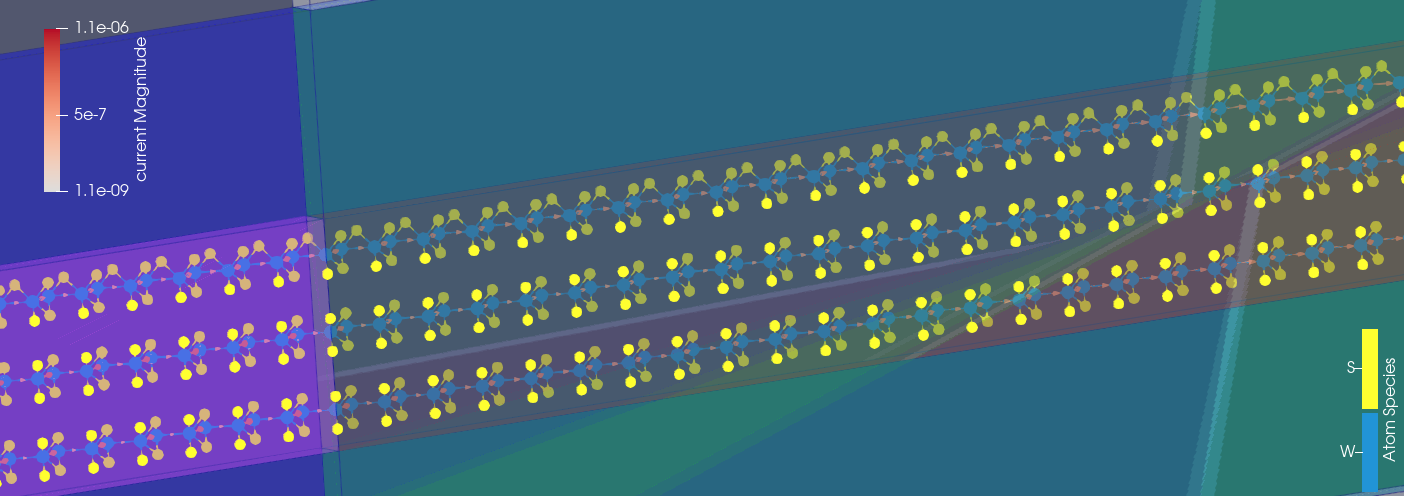Chemically tunable 2D materials for next generation nanoelectronics using first-principles quantum transport modeling
Leuven | More than two weeks ago
Explore chemically-tuned 2D materials for future nanoelectronics using state-of-the-art atomistic quantum-transport techniques
Two-dimensional (2D) materials, such as layered chalcogenides, are an exciting new class of materials with extraordinary physical and chemical behaviors. They have the potential to enable an entire range of new technological applications ranging from electronics to photonics. To realize this potential and overcome certain challenges, for example at their interfaces, the synthesis of novel, high-quality 2D materials, with a broad spectrum of chemical modification techniques, and a thorough understanding of how these modifications control the material physics is highly desirable.
For instance, doping, which is key in many applications, is not possible by traditional implant techniques in atomistically-thin 2D materials. Doping is a key factor in reducing contact resistivity. A promising way to achieve this, in 2D materials, is to locally change the chemical structure by replacing a transition metal or chalcogenide atom by another one to induce in-situ doping or even induce a phase change from a semiconducting to a metallic. Depending on the nature of the local impurity atom or defect, charge doping or other properties like magnetism could be induced. The possibilities and potential are vast, but understanding is key and a prerequisite for application.
Fundamental understanding of the properties and potential of these materials for device applications are difficult to assess by experiments alone. Ab-initio atomistic methods, such as Density-Functional-Theory (DFT), combined with quantum transport simulations are required to understand the intricate impact of chemical tuning on the electronic and transport physics and properties of 2D materials.
The proposed work relies on the use of state-of-the-art DFT tools (Quantum Espresso, CP2K...) combined with our advanced dissipative ab-initio atomistic Non-Equilibrium Green’s Functions (NEGF) simulator, ATOMOS [1,2], to explore the fundamental physics and electronic and transport properties of devices made of these novel materials including chemical tuning such as substitutional atoms, vacancies, in 2D materials, free-standing and including their interfaces (e.g., metal) [3]. You will work in collaboration with a team specialized in atomistic modelling. You are also expected to closely work and interact with experimentalists and to support and guide the experimental exploratory programs at imec.
[1] Afzalian, A. Ab initio perspective of ultra-scaled CMOS from 2D-material fundamentals to dynamically doped transistors. npj 2D Mater Appl 5, 5 (2021). https://www.nature.com/articles/s41699-020-00181-1
[2] A. Afzalian, E. Akhoundi G. Gaddemane, R. Duflou and M. Houssa, "Advanced DFT–NEGF Transport Techniques for Novel 2-D Material and Device Exploration Including HfS2/WSe2 van der Waals Heterojunction TFET and WTe2/WS2 Metal/Semiconductor Contact," in IEEE Transactions on Electron Devices, vol. 68, no. 11, pp. 5372-5379, Nov. 2021, doi: 10.1109/TED.2021.3078412 (invited)
[3] Duflou, R., Pourtois, G., Houssa, M., Afzalian A. Fundamentals of low-resistive 2D-semiconductor metal contacts: an ab-initio NEGF study. npj 2D Mater Appl 7, 38 (2023). https://doi.org/10.1038/s41699-023-00402-3

Required background: Physical/Electrical/Electronic/Material Engineering, Physics or Chemistry
Type of work: ~40% DFT simulation of new material, ~50% NEGF device physics and simulations, ~10% quantum transport code development
Supervisor: Michel Houssa
Co-supervisor: Aryan Afzalian
Daily advisor: Aryan Afzalian
The reference code for this position is 2024-026. Mention this reference code on your application form.
